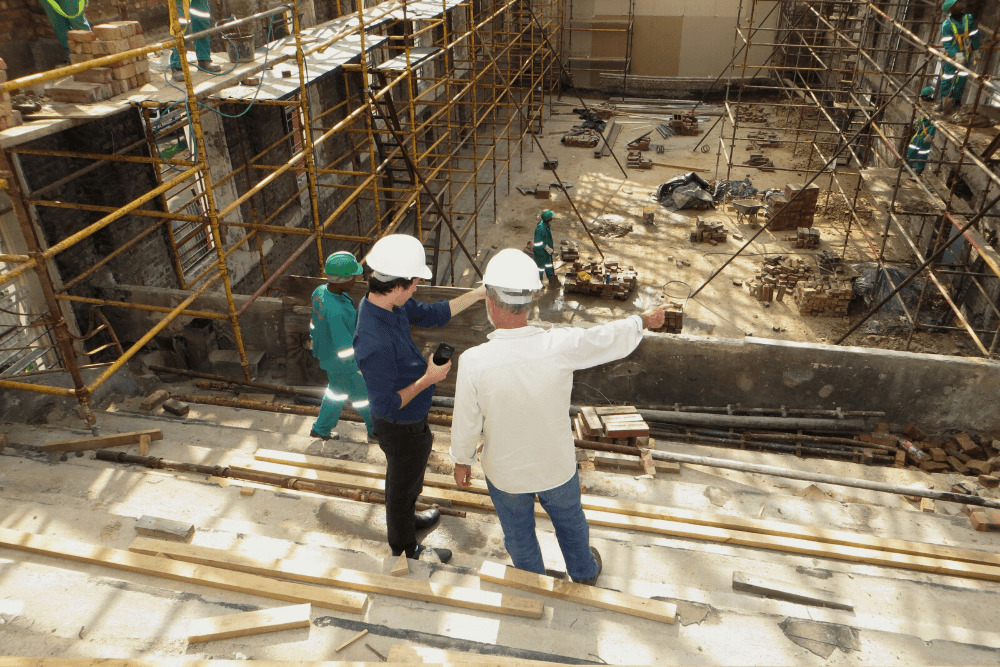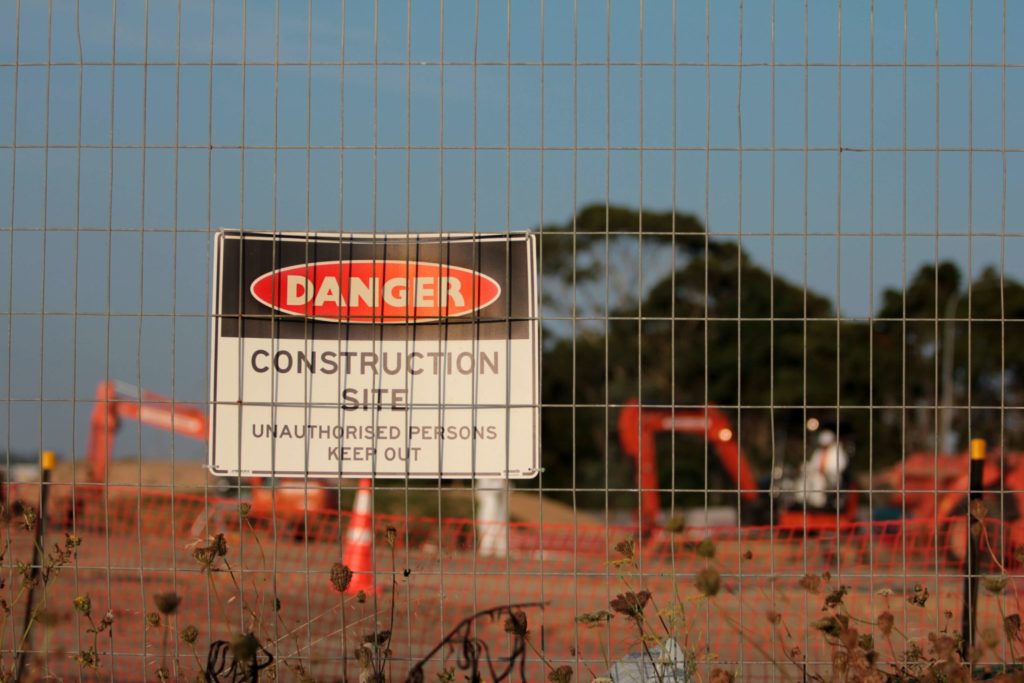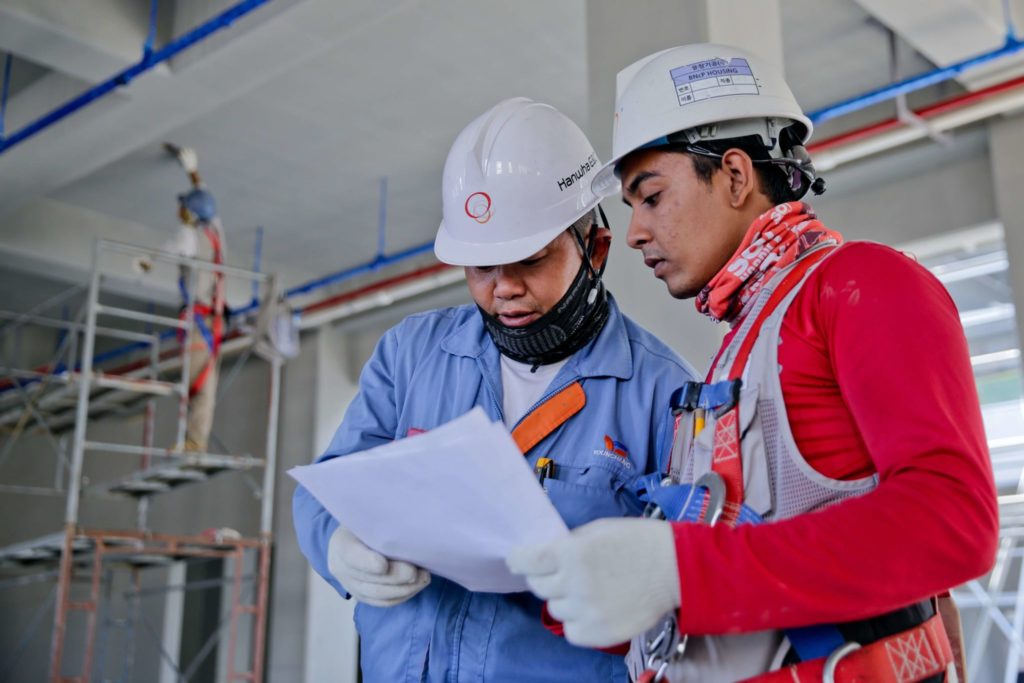Basic Construction Security

Opportunity plus demand is a lethal combination that partially explains why construction job sites are such a frequent target of theft. There are plenty of valuable items—raw materials, tools, appliances, and heavy equipment—with little or no construction site security.
According to industry reports, a construction site is much more likely to experience theft than any other risk or threat, including vandalism, fire damage, or natural disaster. And by a wide margin. If you own or manage a construction company, it’s time to build a basic job site security strategy.
Construction Site Theft: What’s the Damage?
There were more than 11,000 reported cases of equipment theft in 2016, the most recent year for which data is available. That’s more than 30 thefts per day. According to the LoJack Corporation, the most commonly stolen construction equipment includes:
- Wheeled and tracked loaders
- Towables like generators and welders
- Skid steers
- Excavators
- Utility vehicles
Those are big-ticket items. But thieves have a taste for more than just heavy equipment. Raw materials—especially items like lumber and copper—are easy to steal and resell for a profit. That’s especially true when the free market prices of these materials skyrocket, as they have in the last few years.
The National Equipment Register puts the value of stolen equipment every year between $300 million (residential sites) and $1 billion (commercial sites). That doesn’t even include stolen materials or money lost to delays and work stoppages. It adds up, fast. Even worse, less than 25% of stolen equipment is recovered, and equipment theft is 9x more likely than equipment vandalism.
All told, a single instance of theft can amount to $30,000 or more. A recent airport construction site theft saw thieves get away with more than $100,000 worth of equipment and tools.
In 2016, the top 5 states with the highest number of construction site thefts included:
- Texas (2,375 thefts)
- North Carolina (796 thefts)
- Florida (763 thefts)
- California (694 thefts)
- Georgia (577 thefts)
What does all of this mean to construction companies? Construction site security needs to be a top priority.
Essential Construction Security for Job Sites
Remember the two key factors: opportunity and demand. While you can’t do anything about the demand end, we can definitely reduce or eliminate the opportunity for theft.
Thieves are looking for low-risk, high-reward opportunities. Copper wire left out in the open? You might as well place a sign on it that reads: “Free for the taking.”
Anything you can do to increase the risk or decrease the reward is a worthwhile investment and a rock-solid deterrent.

Put a Fence On It
This may seem obvious, but a fence around the border of the job site is your first line of defense.
A fence is simple but effective. And nothing stands out quite like someone climbing or hanging around a fence when they shouldn’t be there. Not to mention, a high fence dramatically increases the difficulty of walking away with stolen items.
A fence keeps unwanted intruders out and valuable items in. Hang a few “No Trespassing” signs on it to reinforce the point.
Access Control
Of course, your crew needs a way in and out. Consider using just one access point (if possible) and monitoring who comes and goes with a sign-in book, swipe cards, or a similar process. Issue both employee and visitor badges so you can easily identify those who should not be there.
Regardless of how many entry points are on the site, you’ll want each to be a controlled gate. This isn’t a revolving door.
Fences and access control aren’t just better construction site security. They may also be necessary for regulatory compliance. Check your local ordinances.
And at the end of the workday, ensure those gates are locked and walk the perimeter of the fence looking for damage or weak points.
Light It Up
Would-be thieves prefer the cover of night. Bright floodlights—always-on or motion-activated—remove the advantage that the dark provides them in avoiding detection. No one wants a spotlight on them or their criminal behavior.
Light up as much of the job site as is practical. Pay special attention to those areas where you store expensive equipment, tools, and materials.
Lock It Up
Handheld tools should go into a secure tool cabinet or shed. Towable equipment should be anchored to an immovable object. And larger vehicles should be locked if possible, with keys stored in a locked site office or trailer.
Take valuable items and materials with you at the end of the day, if practical. Battery theft is an ongoing and increasing occurrence in the industry, so you may want to remove batteries from equipment and tools in order to lock them up, too.
Don’t assume a fence will keep everyone out. Hope for the best, but prepare for the worst.
Consider a Security System
Fences, locks, and bright lights are great, but a determined thief may still try. Fences can be cut or climbed. Locks can be picked or bypassed. Lights can be rendered inoperable. You need something to stop or capture criminals who get through these defenses.
A security system is a fail-safe. Your options run the gamut, from no-frills sensors that activate a simple siren to more advanced systems that include motion sensors, cameras, and more. Any system is better than no system, but it’s wise to invest in the most robust system you can afford. Your construction site security system acts as both a powerful deterrent and a reaction to any criminal activity that does occur.
A screeching high-decibel siren in the middle of the night is going to send all but the boldest of burglars scurrying back to the dark.
More Advanced Construction Security
Beyond those essential security measures, there’s a lot more you could do to mitigate the risk of theft. Let’s dive in.

Draft and Share a Detailed Security Plan
Security should never be a wing-it scenario. You want explicit protocols and policies in place that everyone understands and follows. Your plan should include:
- A zero-tolerance policy for theft. Employee theft happens frequently on construction sites. In fact, 3 out of 4 American employees have admitted to stealing from their employer, 95% of employers have experienced employee theft, and 42% of inventory loss is from employees, according to the US Chamber of Commerce.
- A detailed end-of-day checklist to properly ensure everything goes where it’s most secure and the site itself is as protected as possible.
- Workday protocols for everyone, like security badges; sign-in and sign-out policy for tools, materials, and equipment; what to do if they witness suspicious behavior; and so on.
- Tracking procedure for inventory coming to and leaving the site.
- List of names, contact details, and responsibilities for individuals tasked with security enforcement.
And whatever else you need on your site.
Register Your Equipment
Every tool, piece of equipment, and vehicle should be registered, tracked, photographed, and monitored. Record serial numbers and license numbers to assist with recovery in the event of a theft.
A company like the National Equipment Register (NER) can record details of your heavy equipment and work with authorities to try and recover it via their HelpTech program. You can also check to see if used equipment is stolen before buying it (IRONcheck) and protect your equipment with powerful GPS tracking (IRONwatch).
Similar programs are available through other providers.
Consider RFID Tracking
Radio frequency identification tracking can help manage and monitor your assets on the job site.
RFID tags and readers can be used in a variety of ways. For example, you could use tags to automatically log an employee entering a tool shed and record which tools they took out. The reader would likewise when they returned the tools, allowing site supervisors to generate a complete report at the end of the day to track missing resources.
Security Cameras and/or Security Guards
There is perhaps no better deterrent than security cameras or live guards. Having “eyes” on your valuable assets is a great way to protect and secure them. Both can provide enhanced asset protection, emergency response service, property protection, and trespass protection. But which of these two options is right for you?
Security guards can be expensive and are prone to unpredictability like getting sick, distracted, or falling asleep. And even if they continually wander the site, they can’t be everywhere at once. But they can intervene immediately if and when something happens.
Security cameras are more affordable and never sleep. You can cover every square inch of your job site if you have enough cameras. And they can record what they see. That’s obviously a plus in the event of a robbery. But most cameras don’t do much on their own other than recording.
The Deep Sentinel Solution for Construction Security
How about the best of both worlds? Deep Sentinel offers live video surveillance with security guards.
Our construction site security solution starts with wireless security cameras or Power-over-Ethernet security cameras, depending on your needs and setup. The cameras come with motion detection, night vision, 2-way audio, and a high-decibel siren.
Advanced AI monitors your job site after hours. The technology dismisses non-threats like stray animals but notifies Deep Sentinel surveillance guards of suspicious behavior within seconds.
The guards then assess the situation, engage with the suspect via 2-way audio, and notify the police of a verified crime if necessary.
Start to finish? 30 seconds. And no false alarms, ever.
That’s the Deep Sentinel guarantee.
Need a Solution that Prevents Crime?
Deep Sentinel is the only security technology that delivers the experience of a personal guard on every customer’s home and business. Visit deepsentinel.com/business or call 833-983-6006

